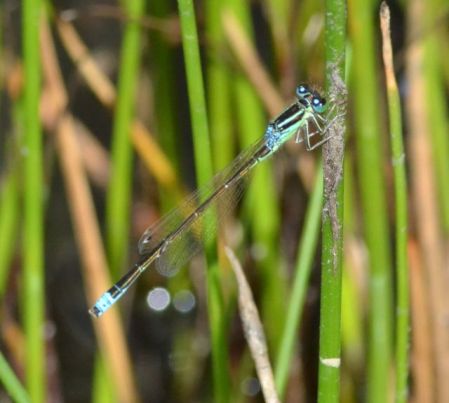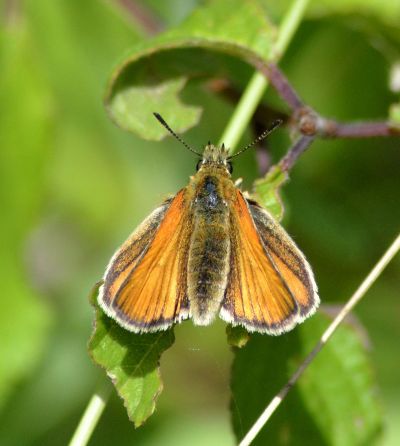This became an extra item on my British butterfly agenda for 2020 after visiting the same site in May (see here). Subtle differences between broods exist in other white butterflies such as Small and Green-veined, and I am broadly familiar with those, but I had not previously made the effort to distinguish them in the enigmatic Wood White. So today was the day.
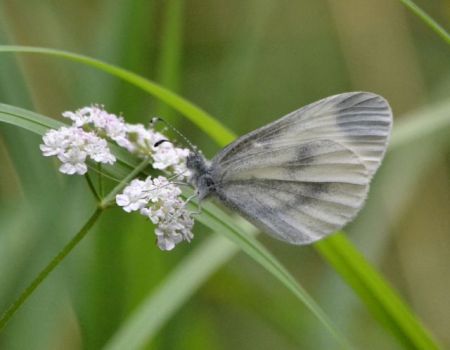
Wood White (2nd brood male)
Second brood Wood White of both genders are smaller than their more numerous first brood counterparts, and the wings in males are greyer with smaller, darker tips (per Thomas and Lewington). First brood butterflies begin to appear in late April, peak in May then dwindle in the second half of June. A later brood usually follows, flying from mid-July to late August. Adults can live for up to three weeks but most last for between 8 and 14 days.
Arriving on site mid-morning, I chose to start at the southern car park in Bucknell Wood (SP 65842 44752) from where a track runs due west that has been reliable for Wood White in the past. It was one of those frequent occasions on which I left home in bright sunshine to find overcast conditions at my destination. My unease then grew on seeing that my camera battery was low and I had left the spare at home. So I had to make careful and sparing use of the camera and that possibly improved my results.
Less than 100 metres from the car I came across a first roosting male Wood White (pictured above), and when it flew the darker wing tips were quite apparent. Something that surprised me was how when it tired of my attentions this insect flew up over the track-side shrubs and even into tree cover. I also noted that behaviour in other of the four specimens I found today, having more usually associated this butterfly with keeping to a metre above ground level.
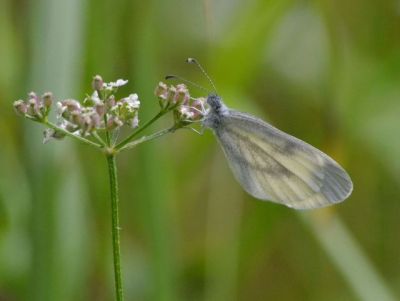
Today’s second male Wood White
A second male (above) further along the track displayed the more dappled, creamy colouration that is apparent in some individuals, but once again the small dark wingtips stood out. At the five way junction in the centre of this wood I turned right towards the area where this season’s first brood observations had occurred on 23rd May and again on 22nd June (see here). My third sighting today was a pristine female (below), in which like the first brood the less intense grey wing tips are more rounded than those of males.
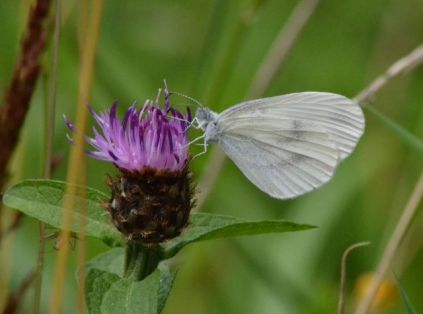
2nd brood female Wood White (note the paler, rounded wing-tips)
Further along the same track I came across the morning’s fourth individual, another male (below, top row). This one held its wings slightly open and so the dark tips were more visible. At the junction with a track from the main car park I turned around and re-traced my steps. But no more Wood Whites were active in the increasingly overcast conditions, so this visit’s tally was four. I was surprised by how fresh some of the other woodland butterflies here still were, Silver-washed Fritillary, Ringlet and Gatekeeper.
I believe this (above) is today’s second male again that I re-found on the track back to my car. I am satisfied with the images in this post since Wood White is not known for settling and hence posing open-winged. So overall this was a pleasing and effective comparison of first and second brood butterflies, and something to add to my career British butterflying experience.







